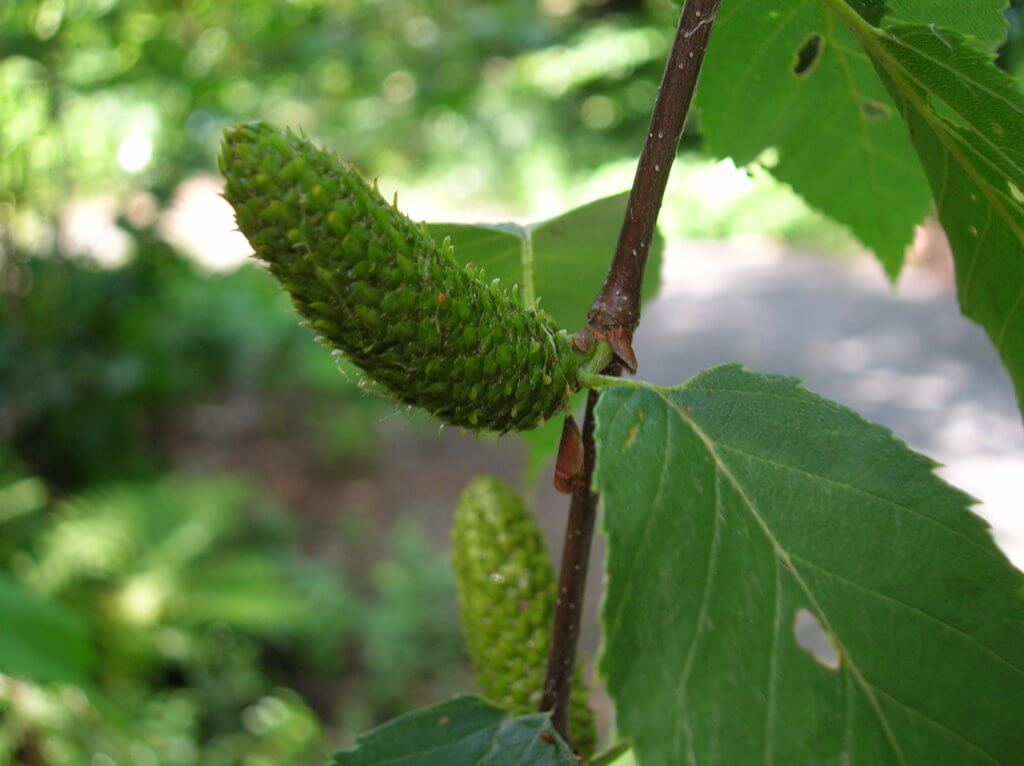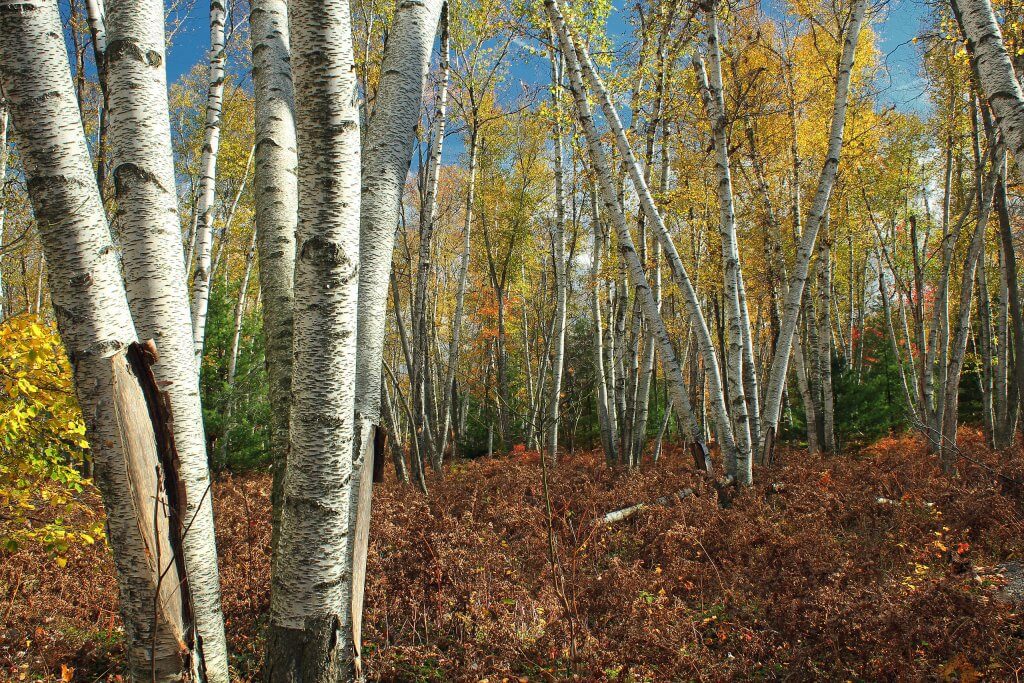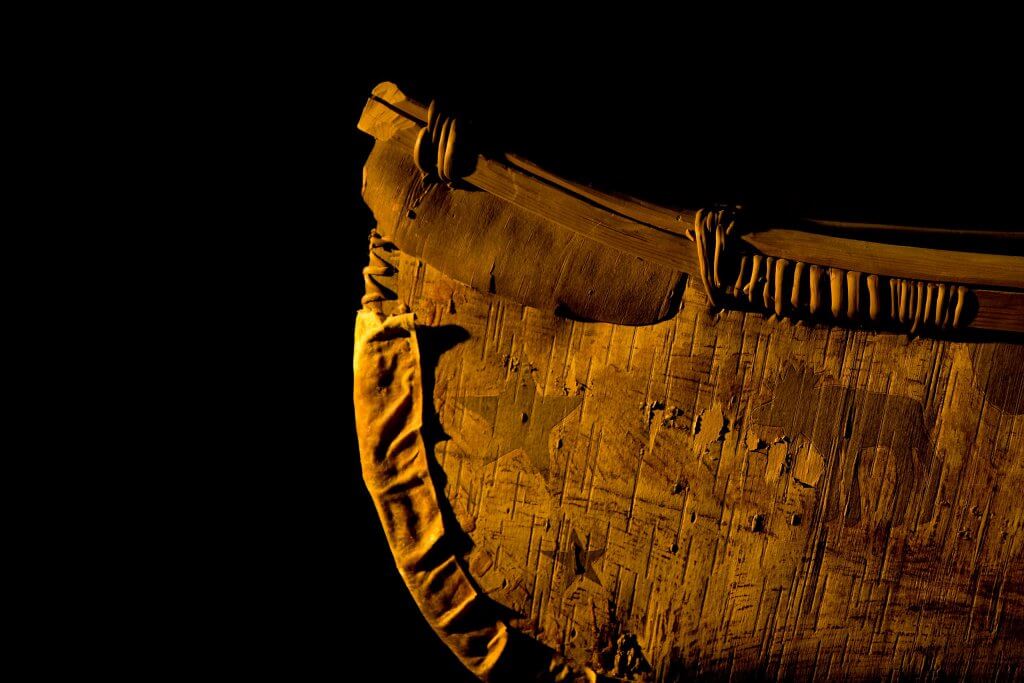Birch (Betula spp.) refers to a collective genus of deciduous trees and shrubs native to the Northern hemisphere. Their bark and hardwood have been used for centuries by a wide range of cultures, as a versatile building material and also a source of food.
The most recognisable feature of a birch will likely be the papery bark. Its shade varying from silvers, yellows, white and even red. With dark, horizontal markings on its trunk create distinctive lines. The small pointed leaves are simple and serrated, with dense and narrow catkins forming in the fall which soon disintegrate, releasing seeds into the wind.

Roughly 15 species of birch are native to the US. The yellow birch (Betula alleghaniensis), sweet birch (Betula lenta) and the paper birch (Betula papyrifera) are each endemic and common in the Northeastern states and areas of the north central region. They can be found within woodlands and forests, and are usually one of the first tree species to dominate recently disturbed land, particularly from burning.
Edible parts and other uses
Young leaves and twigs, sap and inner bark; These are the tasty edibles a birch tree can provide. The leaves and young ends of a twig can be infused with boiling water to create an aromatic and wintergreen tasting tea. The trees can also be tapped in the same way that you would a maple. This sap can be drank as a cool refreshing drink, or boiled down into a sweet syrup.
The inner bark can be collected from newly fallen trees to chop and boil into soups and stews, or dried and ground into flour. Or alternatively the inner bark can be eaten raw, or cooked over a fire and eaten as a snack. Many survivalist books and stories contain adventurers who have managed to sustain themselves by knowing that birches contain a sweet and edible inner bark.
Birch has a number of uses, from birch extract being added into cosmetics and soaps, to the hardwood being used to create furniture and even skateboards!
Cautions
The bark of a birch tree is very distinctive, and luckily no toxic lookalikes exist, so foraging is considered safe for a beginner. As with all foraging, please ensure you are 100% certain that you are correctly identifying the tree.
Birch leaves, twigs, inner bark and sap are considered safe and edible. But as with all foods, they should only be consumed in moderation.
Foraging
An important consideration to note when foraging for inner birch bark is that removing the inner layer of bark from a live tree can cause severe damage and may likely kill it. Removing this layer exposes the tree to infections. You may also remove the xylem, which transports water and nutrients up the tree. For these reasons it is best to only collect the inner bark from recently fallen or felled trees. Unless of course you find yourself in a survival situation!

If you are collecting birch sap, the best time for tapping is early spring, or late March. Young leaves and twigs can be harvested at the beginning of April as the buds begin to appear. The inner bark can be harvested throughout the year. But fall and winter, after a storm, is usually the best time to hunt for fallen birch branches.
Did you know…
Birch bark was of great significance in many Native American cultures. From etching stories onto birch bark scrolls, to birch biting, where beautiful complex designs were printed into a sheet of bark using teeth. The bark was also used to create containers for food storage. Recent studies have concluded that certain compounds within the bark are anti-microbial, helping to preserve foods. However it’s most significant uses were in the creation of canoes and wigwams. It’s bark providing a water proof layer for houses and the hardwood providing a strong canoe structure.

Conclusion
As you embark on an autumnal walk or hike to marvel at the colors of fall, immerse yourself in the season even more by keeping an eye out from fallen birch branches. Likewise in the spring, whilst out hiking, take a small container to collect some young leaves and twigs. From the sap, inner bark to the leaves, birch trees can provide a tasty variety of uses.
—————Written by Hannah Sweet
Hannah is a freelance writer and graphic designer from the UK. With a penchant for travelling, photography and all things botanical, she enjoys writing about a wealth of topics and issues, from conservation and slow living, to design and travel. Learn more about her writing and design services at www.sweetmeanders.co
Many of our readers find that subscribing to Eat The Planet is the best way to make sure they don't miss any of our valuable information about wild edibles.
See our privacy policy for more information about ads on this site






